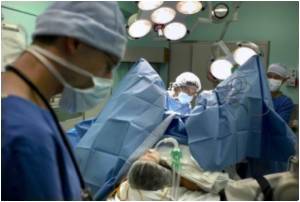New method developed by University of Southampton researchers will enable surgeons to fit replacements with longer and optimized lifespans.

Professor Markus Heller, leader of the MXL project, says: "Joint replacement surgery substitutes worn-out joint tissues with artificial components. These artificial components will also fail eventually, some after only a few years, with nearly ten per cent of all joint replacement operations in the EU each year taking place to replace prosthetics that have worn out. These 'revisions' of joint replacement surgery are complex, require a longer rehabilitation and also come at a substantial cost, with a hip revision estimated to cost ?80,000."
Surgeons today have to rely on their experience to best perform the joint replacement surgery to ensure long-lasting function. There are currently no solutions to support their decision process by reliable, quantitative information on the expected joint mechanics and functional outcome.
The ICT systems created by the MXL project, funded by the European Commission's Seventh Framework Programme, will enable cost-effective development of robust prosthesis designs. It will also support surgical decision-making to provide a safer route to optimal, functional outcome of joint surgery, independent of the surgeon's prior experience and training.
Professor Heller says: "We developed a 3D musculoskeletal model, with data on the variations in bone shape and tissue density, which has enabled advanced biomechanical assessment of the joint reconstruction. The development of this specialised software allows the automated positioning of implants and allows us to modify implant size and position, to address individual patient needs. The intention is, that this technology will lead to increased patient safety and improved lifespan of joint replacement prosthetics."
The MXL project consortium is now offering this unique technology to interested partners, in order to ensure that the ground-breaking developments are transformed into tangible benefits.
Advertisement












